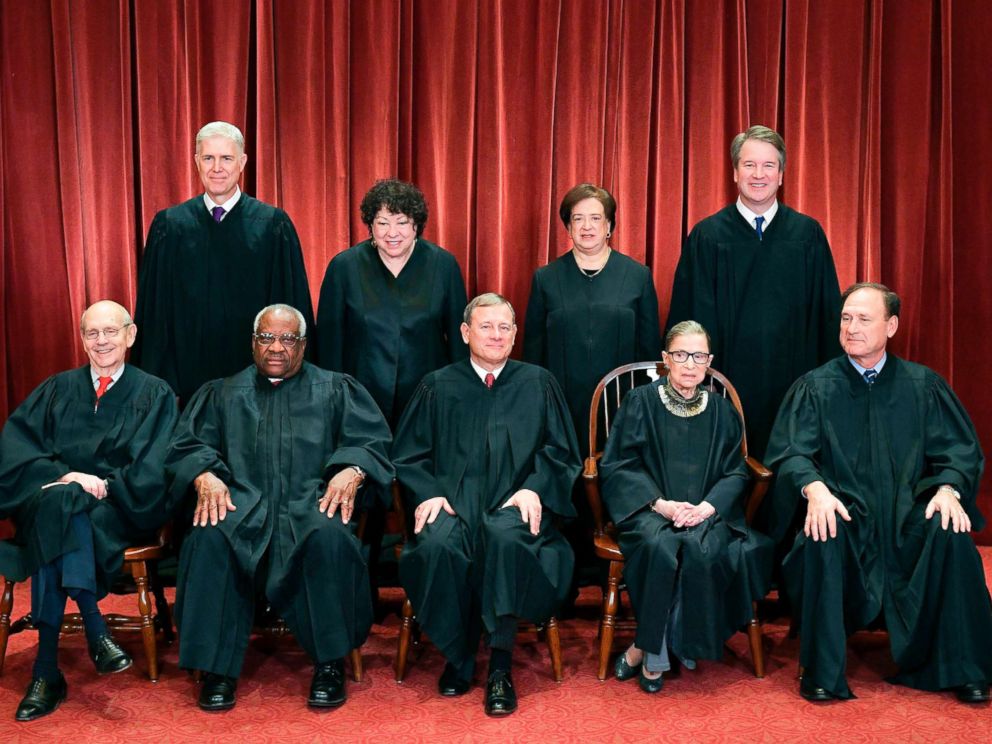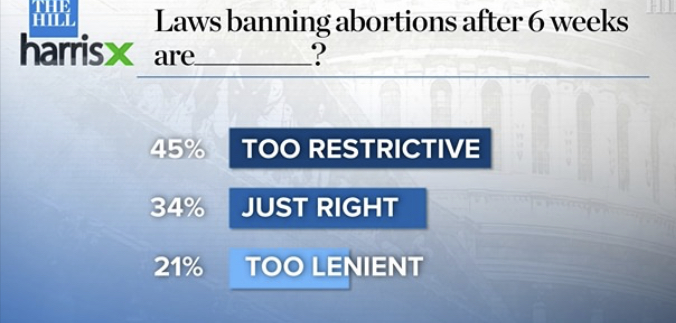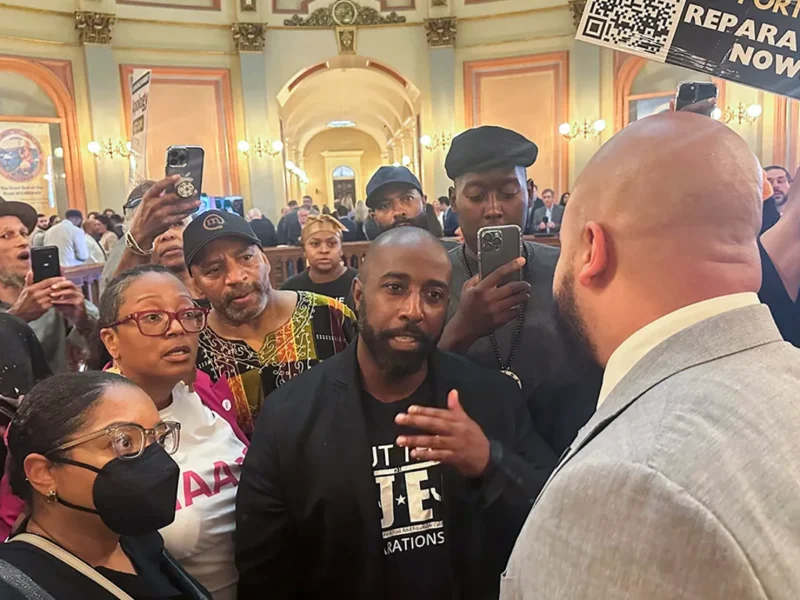Why the Left is Hysterical Over Abortion
As the national debate on abortion intensifies, many rumors and lies have been spread about the test case laws passed in several Pro-Life states. The details of these bills reveal that they are very sensible, have many exceptions, and there are no penalties for women. Polls show a great majority of Americans now want significant restrictions on abortion. The tide seems to have turned on the issue.

The abortion debate has raged in the United States for a century and a half. Many early women’s rights activists and suffragettes were Pro-Life including Susan B. Anthony and Elizabeth Stanton. Later, progressives and early social workers drew eugenics into the abortion question. Margret Sanger hoped that abortion could help to weed out the undesirable population like African-Americans, Jews, and poor Catholics. Sanger was later a fan of Adolf Hitler’s eugenics program, until it eventually became unpopular to be a supporter of his. Margret Sanger founded Planned Parenthood, the nation’s largest abortion provider. Several states prohibited abortion in the years that followed. In 1973, two cases came before the Supreme Court (SCOTUS) concerning Alabama’s law prohibiting abortion.
The infamous Roe v Wade decision was a question of citizenship rights under the United States Constitution: were the unborn to be considered citizens? If an unborn child is a citizen then the child has certain rights, if not, the unborn could be aborted. The Court decided at that time that the unborn could not be considered citizens and that they had no right to live. The SCOTUS left open for future courts the possibility that the unborn could be considered citizens at the point where the child could be viable outside of the mother’s body (approximately 20 weeks today). The “heartbeat” bans and Alabama’s outright ban on the procedure are efforts to address this question of viability left open by Roe. Since the Roe v Wade decision, the SCOTUS has imposed a policy of “abortion on demand, without restriction.” There has been no opportunity for states to try to define the legal rights of the unborn.
There are two curious aspects about America’s new “peculiar institution” (a term once used to describe slavery) that make our abortion debate unique: first, that the procedure is performed at specialized clinics rather than by doctors at hospitals; and second, that the procedure is legal due to its having been imposed by the courts.
In most countries, abortion is not a matter of serious controversy. Abortion is either legal or it is not. The issue is debated only occasionally. Many Europeans are confused as to why the matter is such a controversy in the US. In Europe, most countries prohibit abortion procedures after the first-trimester (12-14 weeks). Britain and Finland have slightly tighter restrictions and Poland and Ireland permit the procedure only to preserve the life of the mother. Again, each of these policies is set according to the political will of their respective electorates. If there is a desire to reform the laws, one way or the other, voters and interest groups need to bring pressure on elected officials to enact reforms.
In the United States, there can be no such political actions. Any state laws that even touch the abortion issue are instantly stayed from enactment by the federal courts and are shortly struck down. In Texas, a recent bill to enact healthcare regulations for the abortion clinics was struck down by the SCOTUS because under the bill, the last clinic in a certain part of Texas would have to close; thus the bill was stuck down due to the question of access. Access is a question of policy not of law. One might also ask whether a clinic should be allowed to operate if the enforcing of basic health regulations would lead to its closure.

In each Presidential election since 1973, the abortion issue has been raised because the President is the only elected official in the United States who can nominate Supreme Court Justices; the Senate must then decide whether to confirm them. Since Supreme Court justices serve for life, opportunities to replace Pro-Choice justices with anyone approaching a more Pro-Life position have been rare. Today, there are four pro-choice justices, two more who are moderately Pro-Choice, and three who are Pro-Life to one degree or another. The court today might allow *some limited regulation or restriction of abortion, but it is unlikely to reverse the Roe decision entirely.
If Roe v Wade were reversed this would not make abortion illegal everywhere, it would instead leave the question to the states. Alabama and Texas might ban abortion all together while California and New York will continue with abortion unrestricted. New York has even made it legal to kill a baby born alive during an abortion, a clear case of infanticide. The Democrat governor of Virginia has made statements in support of the same. These intolerable steps have sent the Pro-Life community into full drive. If anyone is to blame for the renewed initiative to restrict abortion, it is these proponents of infanticide. Nevertheless, it is likely abortion will remain legal in the United States for the foreseeable future at the very least during the first trimester.
Support of the Majority
One reason the debate has intensified recently is a question of generational politics. For some time it has been known that Millennials, and Gen Z to follow, are the most Pro-Life generation since the depression generation. It may seem confusing that a generation that does not believe in marriage and thinks socialism is “cool,” would be Pro-Life. This is one of the many contradictions of the Millennial generation who also abhor taxes and think the two-parent family is the best way to raise children. Recent polls show younger voters are driving the Pro-Life movement: a sample of registered voters were asked about making the procedure illegal after 6 weeks (the “heart beat” bans many states have passed would prohibit the procedure after 6 to 8 weeks). A majority of Americans, 55%, found these laws either just right or too lenient. A minority of 45% found these laws too restrictive. Younger voters, 18-34, are more likely to find the laws too lenient: 27% with 30% saying they are just right.

Recent poll data from Marist indicates a significant shift in American viewpoints on the abortion question. As of 2019, 80% of American’s surveyed support a ban on abortion after 13 weeks (a first-trimester ban), up 5% from last year. The poll data also confirms that younger Americans are more likely to be Pro-Life than older. CDC data shows that 91% of abortion procedures take place in the first trimester so a first trimester ban would not have a great impact upon the number of abortion procedures performed. The heart-beat bans, on the other hand, might make a dent. It can thus be said that the SCOTUS has imposed abortion on demand, without restriction upon the American public very much against its will.
This reality might explain why the response from the left has been nothing less than a complete panic attack. Pro-Choice memes on social media have been full of hate, insults, foul language, and obvious lies. Some claim that contraception is going to be prohibited. Another meme asks why women should go to prison for abortions. None of the bills passed thus far have criminal penalties for the mother, only for the medical professionals performing the procedure. Such dishonest fearmongering suggests the left cannot even level a rational argument in favor of their position. Another series of memes, for example, claim the GOP is trying to control women’s bodies. Actress Alyssa Milano recently declared a “sex strike” until women’s reproductive rights are restored; and with the same breath embarrassed herself by demonstrating that women still have complete control of their bodies. Pro-Choice advocates cannot even use the phrase “a woman’s right to choose” anymore as some leftwing activists have been called out for excluding trans “men.” It is not even clear how they will define their terms.
Meanwhile, Nancy Pelosi, Chuck Schumer, and Joe Biden among other ancient dinosaurs of the left continue to hold on to abortion on demand, without restriction in spite of popular opposition. The Marist poll cited above, found that more than one-third of Democrats identify as Pro-Life, again a higher proportion of them from the younger generations. In a time of political desperation for the Democrat Party should these leaders be alienating one in three of their supporters? The younger and more hip Democrat presidential candidates are not at all more attuned to the American people either. Presidential candidate Pete Buttigieg in a recent town hall appearance smoothly defended the New York infanticide law by saying the women who have late term abortions have sad circumstances and have prayed about and thought through their decision. How this justifies the murder of a human child living outside of the mother who happened to be born alive during an abortion procedure is unclear.
Republicans have long been divided on the issue but generally support at least some restriction of abortion. President Trump, who closely follows the polls and prefers to act with the majority on social issues, has been quietly Pro-Life during his candidacy and early presidency. He has begun to step up his rhetoric lately in several Pro-Life tweets.
Congress narrowly defeated a 20-week abortion ban in 2018 after it passed the then Republican controlled House and received 47 votes in the Senate (including 3 Democrats 2 of whom are still in the Senate). The bill fell four votes shy of a majority. Although, it should be noted that the Senate requires 60 votes to end debate on any bill which means the bill was unlikely to pass in any event. Several GOP controlled states have decided to challenge the status quo of abortion by enacting heartbeat bans or Alabama’s all out ban to challenge the Supreme Court to offer guidance on the matter. Most of these laws are likely to be struck down, but the court will be able to give an opinion that the States may use to guide future legislation. While most of the bills have exceptions for cases of rape and incest some do not. The Alabama law has no such exceptions but does include an exception for the mental health of the mother; an exception that would be liberally utilized if the law were allowed to go into effect. Most states have struck upon the approximately 8-week heartbeat ban and some include exceptions after that for rape and incest while others do not. Criminal penalties in this legislation apply only to the medical professionals performing the procedure and apply only within the state jurisdiction. If a woman who lives in Alabama traveled to Florida for an abortion, Alabama would lack the jurisdiction to charge the doctor with a crime.

The federal courts are unlikely to allow these bills to be enacted and the SCOTUS will almost certainly strike them down. Even if President Trump is able to appoint another Pro-Life justice, there will not be a majority willing to make significant changes to the precedent set by Roe v Wade. For those who have long struggled for the rights of the unborn, there remains a long road ahead. The tide has turned, however, and the future initiative belongs to the Pro-Life movement.






